Every SEO understands the importance of high-quality backlinks. Our data shows that businesses spend up to 70% of their SEO budgets on acquiring links, and securing a quality backlink can easily set you back by $1,500+
Considering the high cost, you need a reliable way of assessing link quality.
Enter GRANITE, our rock-solid framework for evaluating links.
But before I explain how it works, let me start with some basics. To keep the search engine gods happy 😉
What Are Quality Backlinks?
Quality backlinks are external hyperlinks from authority websites.
Such hyperlinks act as testimonials to your website's trustworthiness and authoritativeness. If a well-known media outlet, company, or blogger links to your page, they vouch for its quality.
Google uses these links to rank pages (along with hundreds of other factors).
The consequence? The more quality links you have, the better your performance in search engine results.
That's why link building is a vital part of search engine optimization.
GRANITE: What Makes A Quality Backlink
GRANITE is an acronym for:
- G - GEO and Traffic
- R - Relevance
- A - Authority
- N - Natural Acquisition
- I - Internal linking
- T - Tags (Dofollow vs Nofollow)
- E - Editorial placement
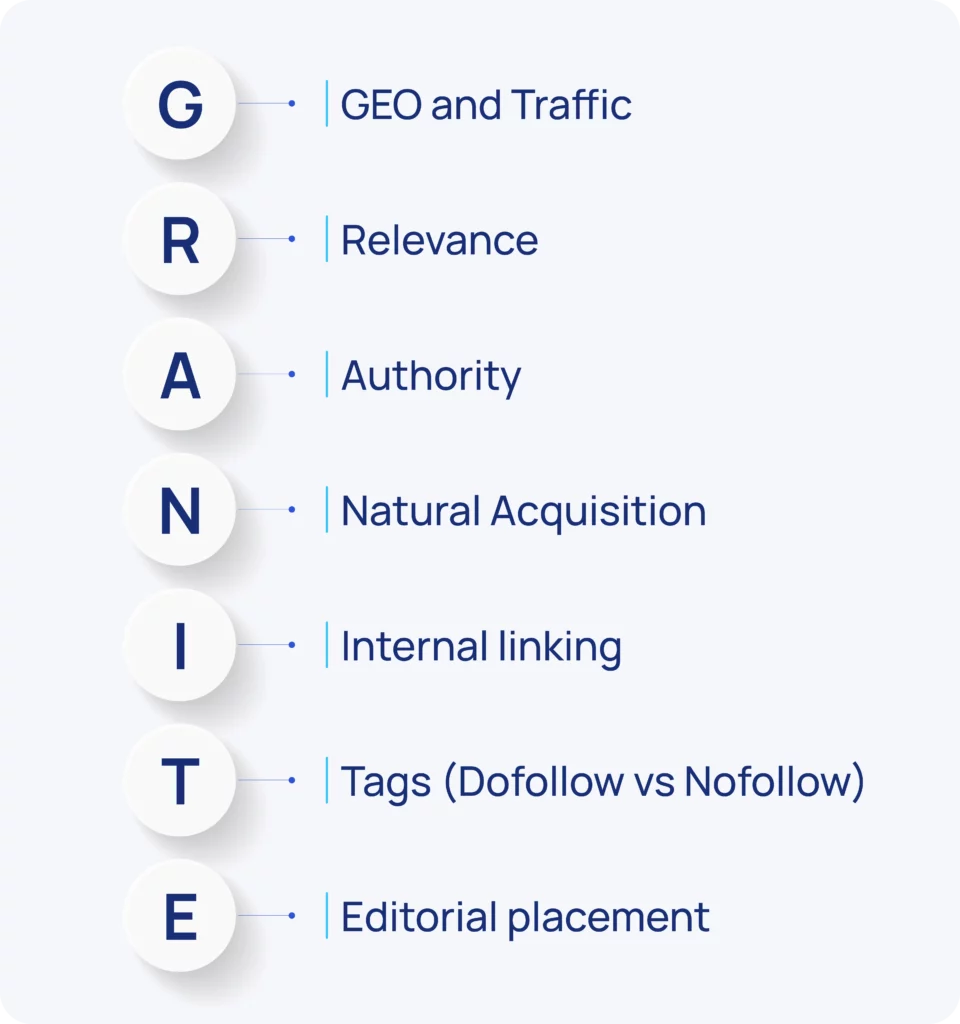
Let's explore each of the seven factors.
G for GEO and Traffic
Website traffic is one of the first things I look at when I assess the backlink quality.
Apart from improving your search engine rankings, backlinks bring referral traffic to your website and increase its online visibility.
That's why quality links come from pages that attract organic traffic.
For example, we have recently secured a niche edit in a Databox article, which attracts an estimated 665 organic visitors a month. That's a solid figure.

Apart from the current monthly traffic, we also look at the growth trend. Links from growing websites are a better long-term investment. Their returns keep increasing over time.
Again, the above link was a good use of our resources. The page has been gaining traffic since its update in February.
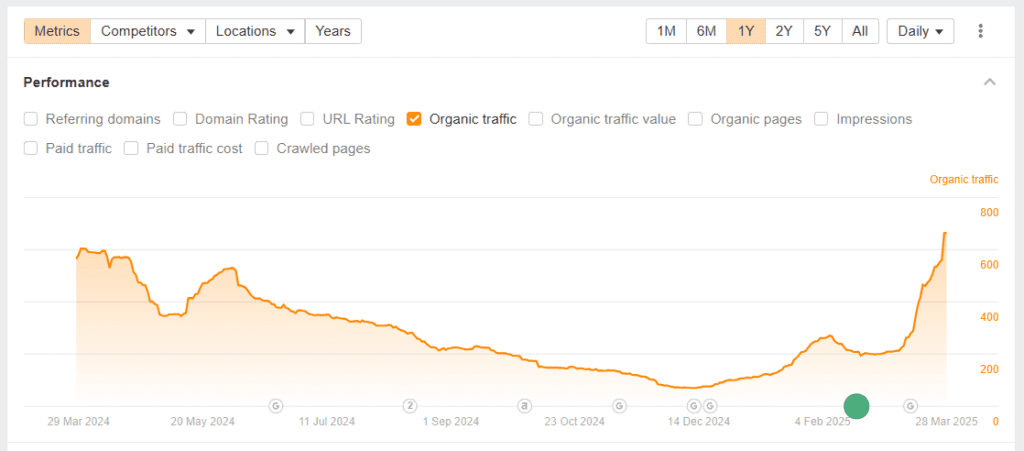
Wondering about the GEO in our acronym?
Essentially, the traffic needs to come from the right destinations.
Most visitors who read the Databox article come from the US, which aligns with our target audience. If we targeted Indonesia, it wouldn't be such a strong link anymore.
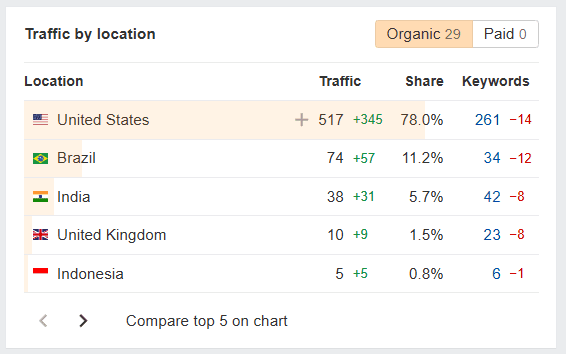
A word of warning:
Robust organic traffic doesn’t necessarily mean a high-quality website.
Let's take startuptalky.com as an example. The website attracts over 126K monthly visitors.

Incredible, right?
Not quite! They achieve it by targeting keywords that aren't linked to their niche. Unless I’m missing something, "abandonded super cars in dubai" or "michael jordan endorsements" don’t have much to do with startups.
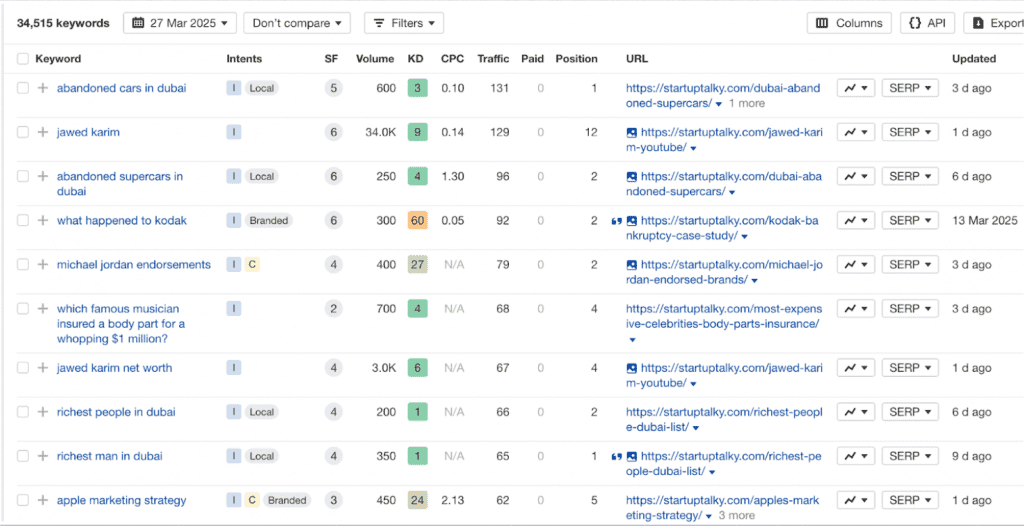
To quickly assess traffic quality, look at its value. The $11.6k isn't much in the context of the enormous traffic the website attracts.

R for Relevance
Nearly 85% of our last year's survey participants named relevance as the #1 factor when assessing backlink quality. I couldn’t agree more.
By relevant, we mean:
- From a website in the same niche. Like this link we got from BacklinkManager.io.

- From pages that cover related topics, even if their main focus isn't on your niche. Like the Databox article above.
- From websites targeting the same target audience. For example, Hubspot creates content for marketers, many of whom are involved in SEO and link-building.

- With a relevant anchor text accurately describing the content of the target page.
A relevant link always trumps an irrelevant one, even if other metrics, like traffic or website authority, are much higher.
A for Authority
Links from high-authority websites and pages pass more PageRank, or link juice in SEO parlance.
SEO tools have developed proprietary metrics to quantify website authority:
- Domain Rating (DR) and URL Rating (UR) - Ahrefs
- Authority Score (AS) - Semrush
- Domain Authority (DA) and Page Authority (PA) - Moz
- Citation Flow (CF) and Trust Flow (TF) - Majestic.
How exactly they calculate them isn’t known, but we know they all consider the number of links and the linking domain authority.
Three things to bear in mind when using the authority metrics:
- They aren't the same as PageRank. Google uses its own unique algorithm to quantify authority.
- You can easily manipulate them, for example, by buying spammy links. Google isn’t so easy to cheat.
- For link-building, domain-level metrics aren't as useful as page-level ones (UR, PA, etc).

Despite their limitations, SEOs — yours truly included — use authority metrics to get a quick idea of the link quality before they dive deeper into other metrics.
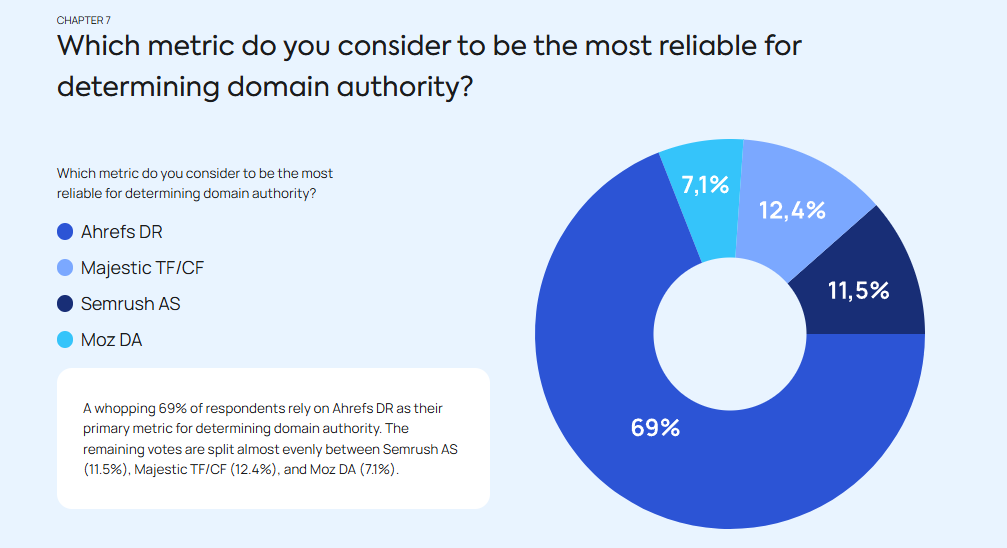
N for Natural Acquisition
Natural links are valuable because they're acquired organically, without asking anyone to link to your content or paying them to do so.
People find your content helpful, and they link to it.
For example, Neil Patel recently linked to our 2024 State of Link Building report.

Is there a better testimony to its value?
But that’s not the main point.
Natural backlinks are unique and difficult to replicate by your competitors.
For example, the above link is used to support a specific point in the article. Even if someone creates a better, more in-depth report, which is extremely resource-intensive, they may not fit so seamlessly into the context.
And there's no guarantee website owners will replace your links with theirs.
That's why organic links tend to have a longer lifespan than those built using more transactional methods, like link exchanges.
🤌 Editor's note: When you promote your content, for example, via social media or outreach, it's still an organic link. Otherwise, your audience may never discover your content. Especially when you don't have an established following or are only starting to work on your rankings.
I for Internal Links
The number and quality of internal links pointing to the linking page are another powerful yet often overlooked factor.
Links from well-interlinked pages are valuable for three reasons:
- Internal links pass authority within a website. Even if the page doesn't have any external links, it gets link equity from other pages on the same domain.
- Internal links bring traffic to the page from other parts of the website.
- The more internal links, the more often Google crawls the page. So your link will be discovered more quickly.
So when choosing between two pages on the same website, pick the one with more relevant internal links.
You can inspect the page's internal links in the Ahrefs Internal Links report (Site Explorer).

T for Tags (Nofollow/Dofollow/Sponsored/UGC)
9 of 10 SEOs will choose a dofollow link over a nofollow, sponsored, or UGC one.
It makes perfect sense: Dofollow links are the only ones that definitely pass link equity.
What about the other rel= attributes?
It’s generally believed they reduce the value of the link:
- The nofollow tag tells Google that the page doesn't endorse the content they link to.
- The sponsored attribute means the publisher was paid for including the link.
- The UGC tag indicates the content comes from a page where users can publish content without editorial supervision, for example, forums.
Reduce doesn't mean they cancel it.
Google has changed how it treats nofollow links. It doesn't automatically dismiss them anymore. The attributes are just hints that help Google decide which links to consider and which not.

More importantly, nofollow, sponsored, and UGC links still bring referral traffic and increase website visibility.
For example, this Zapier listicle attracts over 67K visitors every month.

That's 67k potential leads if you manage to get on the list.
That’s why I will always choose a nofollow link in such an article over 5-10 dofollow links from pages with lower traffic.
And I'm not the only one who sees value in nofollow links.
46.9% of SEOs we interviewed last year actively pursue them.
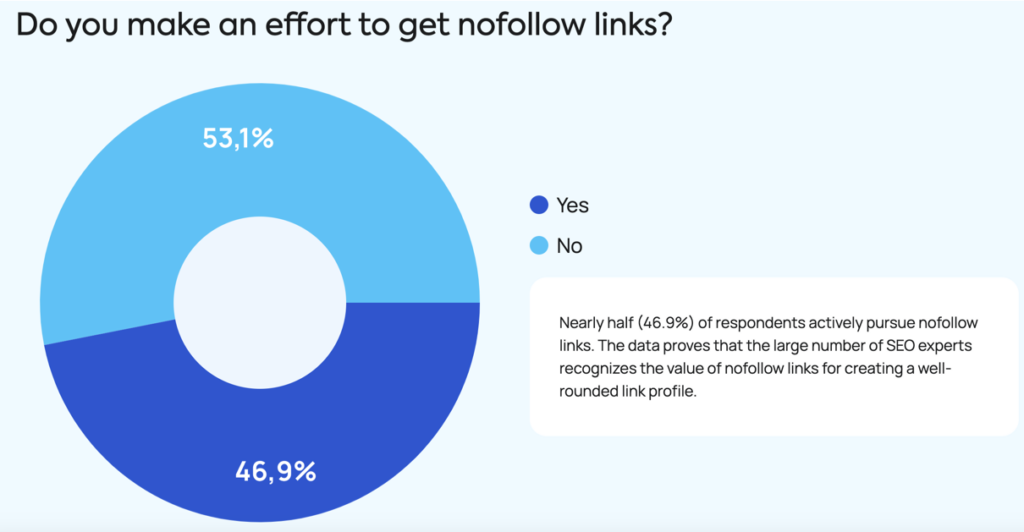
🤌 Editor's note: SEOs speculate that brand mentions can increase your visibility in AI-driven search. If proven true, this could be another reason why nofollow links from established publications are valuable.
E for Editorial placement
Where your link appears on the page also affects its quality.
For starters, a contextually relevant placement within an article will deliver more value than a link in a menu or page footer.
That's not all:
Where in the text the link appears matters as well.
I recently approached an editor about getting features in their listicle. They got back to me with a price list, where higher positions were considerably more expensive.

The reason?
The lower down, the less exposure.
Readers usually drop off before they make it to the bottom of an article, so if yours is the last product or service in the listicle, not many people will see it.
Moreover, people perceive items listed at the top of a listicle as more important, especially if numbered.
Wrap Up
A quality backlink is an organically acquired dofollow backlink at the top of a relevant high-authority page with high organic traffic from your target geographical location, supported by many internal links.
Or in other words, it's GRANITE.
Evaluating backlink quality with our framework isn't difficult even for novice SEOs.
Securing such backlinks is another story. It requires experience, skills, and a wide network of industry connections. These take time to develop and even then — lots of effort.
If you'd rather focus your energy and resources on other high-value tasks, Editorial.Link can get link-building off your plate. Get in touch to learn how we can help you get quality backlinks for your website.

